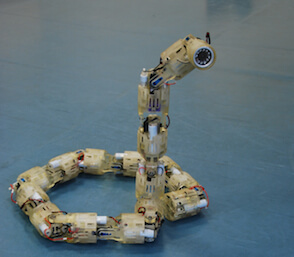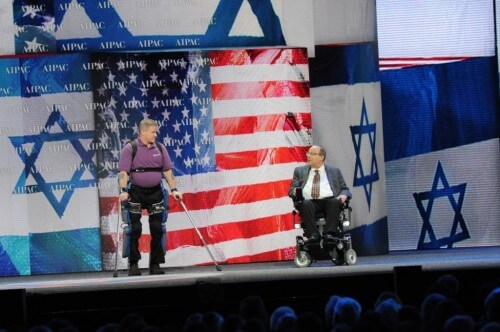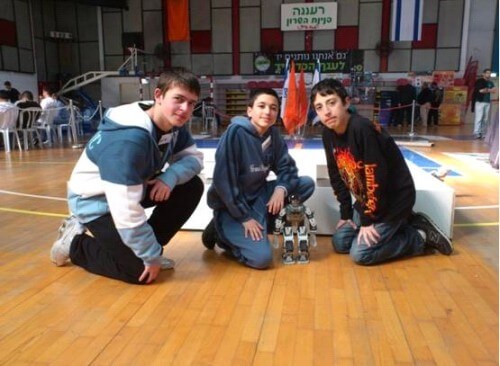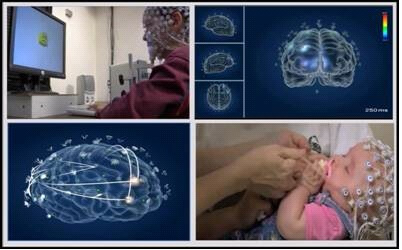Three projects by researchers and graduates of the Technion and years of Ben Gurion University will be presented to President Barack Obama
Three projects by Technion researchers and graduates will be presented to President Barack Obama during his visit to Israel.

snake robot
Developed by Professor Alon Wolf from the Faculty of Mechanical Engineering at the Technion. It is designed to enter spaces in areas of earthquakes and house collapses, and assist in search and rescue operations, by transmitting images and sounds of trapped people. The robot is unique in its way of crawling and is very flexible thanks to a large number of joints. Each link contains motors, a computer, sensors, wireless communication and batteries. The robot carries a camera on its head. Thanks to the snake's flexible structure, it can weave between the ruins in a way that does not cause further collapse of the structure, and provide vital information from inaccessible areas about the condition of the trapped, the presence of dangerous substances, etc.
Rewalk

Technion graduate Dr. Amit Gofer, founder of the "Argo Medical Technologies" company, will present the ReWalk, which is a motorized exoskeleton that restores the ability to walk to the paralyzed and other daily functions (sitting, standing and climbing/descending stairs). The ReWalk is the first device of its kind that changes the lives of paralyzed people, and Stephen Hawking defined it as one of the five most important machines for humanity. The device has already restored the ability to walk to nearly 200 disabled people and is used in the USA, Europe and Israel, including participation in marathon races. Amit will present the ReWalk and Radi Kioff, an IDF disabled person who is paralyzed in his lower limbs, will perform a live demonstration.
The device allows those paralyzed in the lower limbs to restore function in a lower body part, by means of a special device strapped to the body. The device is powered by a rechargeable battery that is enough for the whole day. The device uses motion sensors to detect the user's movements and translate them into the movement of the joints. The users of the device no longer need to use the wheelchair and can move and stand upright. The ReWalk allows for walking on level and inclined surfaces.
Dr. Gopher recently presented his technology, which is considered groundbreaking and life-changing, at the annual IPAC conference in Washington, and described the company's growth plans -
Argo Medical The Rehabilitation 2.0 ReWalk model is available today for commercial use in Israel, Europe and the USA and the ReWalk Personal model intended for private use is commercially available in Israel and Europe
The founder of Argo Medical Technologies, Dr. Amit Gofer, received recognition from the American-Israeli Public Affairs Committee (IPAC) during the annual conference in Washington. Gopher demonstrated the ReWalk, an "exoskeleton" suit, which allows the disabled or paralyzed in their legs (such as paraplegia) to stand and walk independently and without help. Dr. Gofer is an Israeli entrepreneur who is paralyzed in all four limbs, whose story and personal experience inspired him to invent the ReWalk.
Dr. Amit Gofer said: "I am humbled to receive this recognition from a respected organization such as AIPAC. I am very excited about the fact that the ReWalk has become a global product and how it is currently improving the quality of life of many disabled people in the world. We are committed to continuing to develop exoskeleton technology and promote its availability worldwide."
Dr. Gopher founded "Argo Medical" in 2001 as a company dedicated to the development of the ReWalk. Since its establishment, Argo has grown into a global company with more than 30 ReWalk centers and more than 200 paraplegics trained to use ReWalk, as well as experienced international management, which joined the company during the last year.
Argo currently offers two models of the device: ReWalk Personal for home use, which is currently available in Israel and Europe and is awaiting FDA approval in the US; and the ReWalk Rehabilitation, currently available in Israel, Europe and the United States. Both models are designed to provide a personalized user experience, using computers and motion sensors included in the device. The computers and sensors reproduce the initiative walking action, without the need for restraint devices or switches to start the movement.
Larry Jasinski, CEO of Argo Medical said: "Dr. Gopher is one of the leaders who take Israeli innovation to the global level. Dr. Gopher's entrepreneurial nature and business approach are in line with IPAC's goal - to establish courageous and active ties between the US and Israel, through support for economic cooperation and partnerships."
Dr. Gabriel Zeilig, director of the neurological rehabilitation department at Sheba Hospital: "We were privileged to be part of a very successful clinical study and to use the ReWalk exoskeleton. We are excited to see the development process of the technology for use around the world."
ReWalk uses patented technology that moves the knee and hip joint. It controls movement through slight changes in the center of gravity, mimics the natural gait and provides a functional walking speed. The system senses a forward tilt of the upper body to initiate the first step. Repeated changes in body position generate a sequence of steps that enable natural and efficient walking.

Photos: Technion spokespeople
The generation of future scientists
Yarin Frankel, Omer Zamir and Omer Shoshen, students of Urban C School in Haifa, are the winners of an international robotics competition held in Connecticut in the United States in 2012. The students, under the guidance of Professor Igor Werner and his doctoral student Dan Kuperman, from the Department of Science and Technology Education at the Technion, won for developing a robot A waiter designed to demonstrate the idea of service to the disabled in their home. They developed a "human" waiter robot, which is better received by the user. The robot has 18 motors, sensors, a compass and a camera.
Ben-Gurion University's technological developments will be presented to US President Barack Obama during his visit to Israel
Two developments by researchers at Ben-Gurion University of the Negev will be presented to US President Barack Obama during his visit to Israel. The developments will be integrated into an exhibition highlighting the scientific achievements of Israeli researchers, which will be presented to President Obama at the Israel Museum on Thursday, March 21.3.2013, XNUMX. The selection of the projects was made by a special committee in the Prime Minister's Office.
The first development is MinDesktop, a helmet that allows controlling a computer with the power of thought or facial expressions alone through an advanced brain-computer interface (BCI). The computer is controlled without a mouse and keyboard but through a helmet that samples the user's brain waves at fourteen different points. The system developed in the Department of Software Engineering at Ben-Gurion University of the Negev, under the leadership of Dr. Rami Pozis, is intended to serve people with physical disabilities that do not allow them to operate a computer or computer-operated aids by the usual means.

The second development is the Brain Network Activation (BNA™) technology of ElMindA, a subsidiary of Ben-Gurion University of the Negev. This is a platform, led by Dr. Amir Geva, a platform that enables visualization and monitoring of brain activity for the needs of accurate diagnosis of brain function and dysfunction, development of debilitating diseases and rehabilitation, responses to treatments and psychiatric, neurological and pain problems. BNA™ technology is currently used in a wide variety of research programs with leading partners in the USA, in particular it is valued as a tool for objective imaging and as a monitoring platform for recovery from sports injuries and concussions and as a supporter in making decisions for returning to activity - a matter of great significance in public health in the USA.
ן

3 תגובות
impressive
It's a bit sad (and some would say cheeky) that while "we" present the achievements of Israeli scientists and engineers for the benefit of the physically challenged, the majority of Israel is not accessible at all to those disabled...